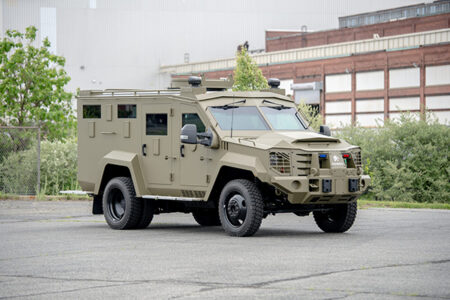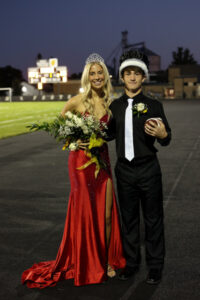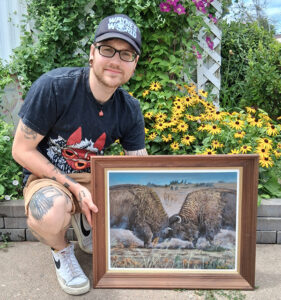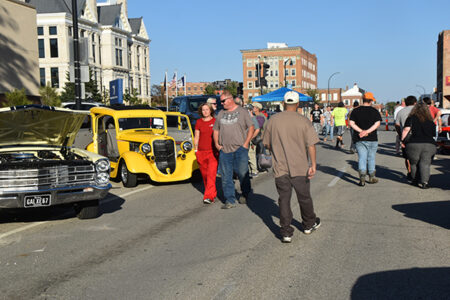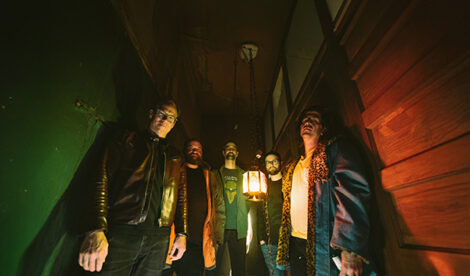Extraordinary: The story of Gilman native and WWII casualty Jim Ward

CONTRIBUTED PHOTO This memorial card, showing James J. Ward wearing not his USMC uniform but his Kemper Military School class A uniform, was used at the memorial service held in Gilman after his death.
BOONVILLE, MO. — James “Jim” Ward came to Kemper Military School from Gilman, a small farming community in central Iowa. His parents owned and operated the drug store in Gilman and together the family lived on the same farmland purchased by the family in the 1870’s. Jim grew up hunting, fishing and doing farm chores and was destined to inherit the family business. Jim enjoyed the friends he made growing up in Gilman. They were the hardest part of leaving Gilman for Boonville, Mo.
Kemper recorded Ward arriving for the fall term of school year 1939-40 as a college freshman. Jim found a good environment for himself and easily made friends at Kemper. Even though he had already graduated from high school, he recognized and respected the younger cadets who outranked him. In fact, Jim Ward’s first roommate was a high school sophomore from Arkansas who Jim tutored through algebra during evening study.
By all accounts, James Ward was an ordinary cadet, with above average grades, and not particularly athletic, although he did play on his company football team. Jim Ward was also keenly aware that his younger brother, Albert would be coming to Kemper the next year. To this end there was an added measure for protection of the family name if he should get in trouble of any kind.
Ward graduated from Kemper Military School in 1941, only a few months before Pearl Harbor. When that day came he almost immediately (January 9th, 1942) enlisted in the US Marine Corps. Ward wanted action; he wanted to be on the cutting edge, and in the fight! USMC Private James J. Ward found himself near the end of boot camp when he saw a recruiting poster inviting marines to apply for a special fighting group called the 2nd Marines. There was a phone number at the bottom of the poster along with the name of LTC Evans F. Carlson. The USMC high command decided there was a need for a commando or guerilla type fighting force and placed the development and readiness of this specialized fighting force in the hands of LTC Evans F. Carlson.
Over 11,000 marines applied for the specialized training in the organization, which became known as “Carlson’s Raiders.” Of the initial applicants, fewer than 1,000 were chosen for training and James J Ward was one of the few. As weeks went by, the training grew more and more difficult involving even more determination and sacrifice.
In addition to the expected types of training, Ward and his fellow marines also learned small boat operations, submarine insertion, survival skills and improvised explosives. Each phase of training reduced the Raiders numbers until LTC Carlson took his newly formed unit to New Zealand and Australia for the final phase of their training, jungle warfare.
It was during this time in Australia when the 2nd Marines came up with the idea for their signature patch. It was also during this time that James captured an enemy type 99 machine gun in the battle of Midway along with a Japanese flag. James carefully and methodically sent the gun home to Gilman piece by piece, where his father put it together and proudly displayed it in the picture window of the family drug store along with a rising sun flag he had captured.
The ordinary cadet from Kemper Military School was in the thick of it! In one battle with the Japanese, his unit killed over 1,200 Imperial Japanese Army soldiers at a loss of only 18 marines. Their successes were indeed extraordinary!
Now came the advance upon Bougainville and what became known as the Battle of Piva Forks. D Company, 2nd Marine Raiders were tasked with moving to the north and seizing Bougainville. The Raiders had previously dyed their fatigue uniforms black and nearly every member of the Raiders carried multiple weapons, both edged and firearms. In order to delay the American advance, the Japanese had constructed barriers and emplacements along the route. Some were manned, some were heavily surrounded with mechanical mines, and some were simply barriers erected by the Japanese. All of the obstacles required careful approach with tactical awareness.
James and his team of Raiders were tasked with the duty of reducing the obstacles and any enemy who may be within. On approach to one of the obstacles his team came under intense and deadly enemy fire killing James Ward instantly. The hometown hero of Gilman became the first casualty of WWII from his town and one of the first from Iowa. He became the 18th star of Kemper’s Gold Star Alumni.
Back in Gilman, there was quiet mourning for the kid who was such an ordinary guy. He used to take friends to his dad’s drug store for shakes after school, everyone liked James and his loss hit the community hard. James was buried in the Bougainville Military Cemetery while a memorial service was held in Gilman. The entire town showed up, six of his closest friends brought forward an empty casket into which notes and mementoes from the community were placed.
A headstone marker was placed for James in the family plot of the cemetery near Gilman. For nearly 50 years an unknown admirer annually placed flowers on the marker noting the anniversary of his passing. Echo Company, Kemper Military School is proud to make James J. Ward an honorary member and commend him to the Eternal Corps of Cadets. James Ward now stands out as anything but ordinary in his black fatigues and distinct patch, which was never authorized by the USMC or the Department of the Navy.

